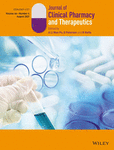Involvement of emergency medicine pharmacists in stroke thrombolysis: A cohort study
Funding information
There were no additional sources of funding for this research. All research was conducted within existing resources.
Abstract
What is known and Objective
Thrombolysis with Alteplase (rtPA) improves functional outcome among selected patients after acute ischaemic stroke. Benefits are most pronounced with early intervention. Our aim is to assess door to needle time (DTNT) for acute stroke after a stroke call-out redesign including addition of an emergency medicine (EM) pharmacist to the team.
Methods
A retrospective cohort of stroke patients who received rtPA was compared to a prospective cohort after stroke callout re-design in an adult major referral hospital in metropolitan Melbourne, Australia.
All patients who presented during EM pharmacist working hours and were thrombolysed in the ED for stroke from December 2011-June 2014 pre and July 1st 2014-August 2019 post were included. The primary outcome was DTNT. Secondary outcomes included proportion of patients with a DTNT within 60 min, time to blood pressure (SBP) reduction, intracranial and extracranial bleeding, hospital length of stay (LOS) and mortality.
Results and Discussion
There were 218 patients eligible, 64 patients pre and 122 patients post implementation were included. The cohorts were similar in demographics. There was a significant association of time to thrombolysis (HR 1.61; 95% CI: 1.18–2.20; p = 0.003) with the intervention. Median DTNT improved from 73 (IQR 52–111) min to 61 (IQR 47–80) min (p = 0.012). Interrupted time-series analysis did not demonstrate intervention at the single time-point of implementation of the intervention to be associated with the improvement.
What is new and Conclusion
Re-design of the stroke call-out team that included addition of an EM pharmacist was associated with improvements in DTNT. The effect of individual interventions at one point in time could not be demonstrated.
CONFLICT OF INTEREST
The authors declare no competing interests or financial relationships.




